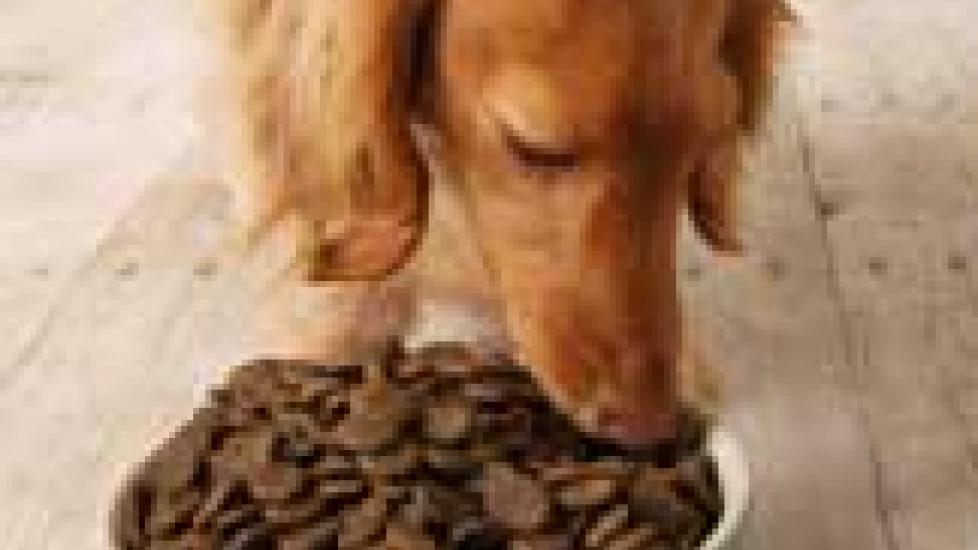Feeding Dogs with Hepatic Encephalopathy
One of the complications commonly seen with advanced liver disease in dogs is hepatic encephalopathy. The liver acts as a giant filter for the gastrointestinal tract (among other roles). After a meal, the circulatory system absorbs all sorts of things from the gut. Many of these substances, especially ammonia, can adversely affect the brain after reaching excessively high levels in the blood.
When liver function decreases to approximately 70% of normal, the signs of hepatic encephalopathy begin to emerge, including:
- mental dullness
- staring
- unsteadiness
- circling
- head pressing
- blindness
- drooling
- coma
These symptoms are usually observed in combination with the typical sings of liver failure including loss of appetite and weight, increased thirst and urination, vomiting, diarrhea, a yellowing of the skin and mucous membranes, and accumulation of fluid in the abdomen.
The symptoms of hepatic encephalopathy typically wax and wane throughout the day, often worsening after meals. Therefore, it’s not too surprising that dietary manipulation plays a big role in the management of the condition.
Dogs with hepatic encephalopathy should eat a diet with a reduced amount of protein since the byproducts of protein digestion (e.g., ammonia) are responsible for many of the symptoms associated with the disease. Diets should contain just enough protein but no “extra” to ease the liver’s workload. Research also indicates that soy protein may be a better at ameliorating the signs of hepatic encephalopathy in comparison to meat-based sources of protein.1 Dogs with advanced liver disease still need calories, however, which are best supplied by increasing the percentages of high quality carbohydrates and fats in the diet.
Feeding several smaller meals throughout the day rather than just one or two larger meals is also beneficial. This feeding schedule reduces the spikes in deleterious metabolites circulating in the bloodstream thereby reducing clinical signs associated with hepatic encephalopathy.
Medications that reduce the numbers of bacteria within the GI tract also play an important role in the management of this disease. Antibiotics, often amoxicillin or metronidazole, are used because they kill off many of the bacteria in the gut that produce high levels of ammonia. Enemas can be given to physically remove feces and bacteria from the colon. Oral lactulose, a type of indigestible sugar, is also used for it cathartic properties. The goal is to encourage rapid transit of stool through the intestinal tract to reduce the amount of time bacteria have to act upon it. Lactulose also lowers the pH within the gut, which reduces the absorption of ammonia. The dose of lactulose should be titrated to the point where the dog produces two or three soft stools throughout the day.
Sometimes the liver disease responsible for causing hepatic encephalopathy is reversible, sometimes it is not. In either case, dietary management and other forms of treatment for hepatic encephalopathy buy dogs precious time.

Dr. Jennifer Coates
Source
1. Proot S, Biourge V, Teske E, Rothuizen J. Soy protein isolate versus meat-based low-protein diet for dogs with congenital portosystemic shunts. J Vet Intern Med. 2009 Jul-Aug;23(4):794-800.
Image: Hannamariah / via Shutterstock
